In today’s digital world, software applications have become an integral part of businesses, organizations, and our daily lives. Building a successful software application requires a well-defined and carefully selected technology stack. A technology stack is a set of tools, frameworks, and technologies that developers use to build and deploy software applications. Choosing the right technology stack can significantly impact the performance, scalability, and maintainability of the application. In this article, we will discuss the importance of selecting the right technology stack for software development, the different layers of a technology stack, and the key factors to consider when selecting a technology stack for a software project. With a better understanding of these concepts, developers can make informed decisions and build high-performance, scalable, and maintainable applications that meet the needs of their users and stakeholders.
Understanding the basics of a technology stack
A technology stack is a set of tools, frameworks, and technologies that developers use to build and deploy software applications. It includes a variety of layers, each with its own unique purpose and functionality. Now we will discuss the basics of a technology stack and the importance of selecting the right technology stack for each layer.

A technology stack is a collection of software tools and frameworks used to build and deploy a software application. It typically consists of multiple layers that work together to provide a complete solution. The different layers of a technology stack include the frontend, backend, database, and infrastructure layers. Each layer has a specific function and is responsible for a different aspect of the application’s development.
- Frontend
The frontend layer is responsible for the user interface of the application. This layer includes technologies such as HTML, CSS, and JavaScript, as well as frontend frameworks such as React, Angular, and Vue. The frontend layer is responsible for displaying data to the user and handling user interactions.
- Backend
The backend layer is responsible for the server-side logic of the application. This layer includes technologies such as Node.js, Python, and Ruby on Rails, as well as backend frameworks such as Express, Django, and Flask. The backend layer is responsible for processing data, handling business logic, and communicating with the frontend layer.
- Data Engineering
The database layer is responsible for storing and retrieving data from the application. This layer includes technologies such as MySQL, PostgreSQL, and MongoDB, as well as Object-Relational Mapping (ORM) frameworks such as Sequelize and SQLAlchemy. The database layer is responsible for managing the data that the application uses.
The infrastructure layer is responsible for deploying and scaling the application. This layer includes technologies such as Amazon Web Services (AWS), Microsoft Azure, and Google Cloud Platform (GCP), as well as containerization technologies such as Docker and Kubernetes. The infrastructure layer is responsible for ensuring that the application is available, reliable, and scalable.
Importance of selecting the right technology stack for each layer
Selecting the right technology stack for each layer is crucial for the success of a software application. Each layer has its own set of requirements and constraints, and selecting the right tools and technologies can significantly impact the performance, scalability, and maintainability of the application.
For example, selecting the wrong frontend framework can result in slow page load times and a poor user experience. Selecting the wrong database technology can result in slow query times and poor scalability. Selecting the wrong infrastructure technology can result in downtime and poor availability.
Therefore, it is essential to carefully evaluate the requirements of each layer and select the appropriate tools and technologies that meet those requirements. This requires a thorough understanding of the strengths and weaknesses of each tool and technology and the ability to assess their suitability for the application’s specific needs.
In conclusion, a technology stack is a critical component of software application development. Understanding the different layers of a technology stack and selecting the right tools and technologies for each layer are essential for building high-performance, scalable, and maintainable applications. By carefully evaluating the requirements of each layer and selecting the appropriate technology stack, developers can build applications that meet the needs of their users and stakeholders.
Factors to consider when selecting a technology stack
Selecting the right technology stack for a software project is critical for its success. A technology stack is a set of tools, frameworks, and technologies that developers use to build and deploy software applications. Choosing the right technology stack can significantly impact the performance, scalability, and maintainability of the application. In this article, we will discuss the key factors to consider when selecting a technology stack.
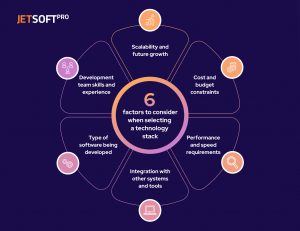
1.Type of software being developed
The type of software being developed is a crucial factor in selecting a technology stack. Different types of software have different requirements and constraints. For example, a web application may require a frontend framework such as React, while a mobile application may require a mobile development framework such as React Native. Understanding the requirements of the software being developed is essential in selecting the appropriate technology stack.
2. Development team skills and experience
The skills and experience of the development team are also important factors in selecting a technology stack. Developers are typically more comfortable with certain technologies and frameworks based on their experience and background. Selecting a technology stack that the development team is familiar with can improve productivity and reduce the learning curve. However, it is also essential to consider the development team’s willingness to learn new technologies and their ability to adapt to changes in the technology stack.
3. Scalability and future growth
Scalability and future growth are critical factors in selecting a technology stack. The technology stack should be able to handle the current and future needs of the application. For example, if the application is expected to handle a large number of users, the technology stack should be scalable and able to handle the increased load. It is essential to select a technology stack that can grow with the application and avoid the need for significant re-architecting in the future.
4. Cost and budget constraints
Cost and budget constraints are also critical factors in selecting a technology stack. Different technologies and frameworks have different costs associated with them, and some may require additional hardware or software licenses. It is essential to consider the total cost of ownership of the technology stack and ensure that it fits within the project’s budget constraints.
5. Performance and speed requirements
Performance and speed requirements are critical factors in selecting a technology stack. Different technologies and frameworks have different performance characteristics, and some may be better suited for specific types of applications. For example, a high-traffic web application may require a caching system to improve performance. It is essential to select a technology stack that can meet the performance and speed requirements of the application.
6. Integration with other systems and tools
The ability to integrate with other systems and tools is also an essential factor in selecting a technology stack. Applications often need to integrate with other systems and tools, such as payment gateways, social media platforms, or third-party APIs. It is essential to select a technology stack that can easily integrate with these systems and tools and avoid the need for significant custom development.
In conclusion, selecting the right technology stack is critical for the success of a software project. The key factors to consider when selecting a technology stack include the type of software being developed, development team skills and experience, scalability and future growth, cost and budget constraints, performance and speed requirements, and integration with other systems and tools. By carefully evaluating these factors, developers can select a technology stack that meets the needs of the application and its stakeholders.
Popular technology stacks for software development
Choosing the right technology stack is a crucial decision for software developers. A technology stack is a combination of software components used to develop and run applications. It is a set of tools, frameworks, and programming languages that work together to create a functional and efficient application. In this article, we will provide an overview of some of the most widely used technology stacks and their strengths and weaknesses.
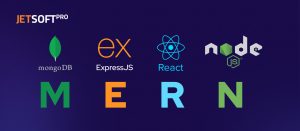
- MERN Stack – MongoDB, ExpressJS, ReactJS, NodeJS
The MERN stack is a popular JavaScript stack used for building full-stack web applications. MongoDB is a NoSQL database that stores data in JSON-like documents. ExpressJS is a web application framework that runs on NodeJS and is used for creating APIs and handling HTTP requests. ReactJS is a JavaScript library used for building user interfaces, and NodeJS is a server-side JavaScript runtime that allows developers to run JavaScript code on the server.
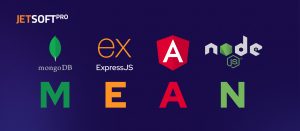
- MEAN Stack – MongoDB, ExpressJS, AngularJS, NodeJS
The MEAN stack is similar to the MERN stack but uses AngularJS instead of ReactJS for the front-end development. AngularJS is a JavaScript framework used for building dynamic web applications.
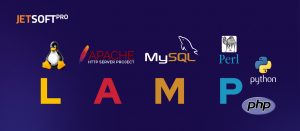
- LAMP Stack – Linux, Apache, MySQL, PHP
The LAMP stack is a traditional technology stack used for web development. Linux is the operating system used for the server, Apache is the web server used for serving web pages, MySQL is the database used for storing data, and PHP is the programming language used for the server-side scripting.
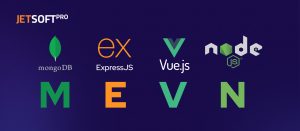
- MEVN Stack – MongoDB, ExpressJS, VueJS, NodeJS
The MEVN stack is similar to the MERN stack but uses VueJS instead of ReactJS for the front-end development. VueJS is a progressive JavaScript framework used for building user interfaces.
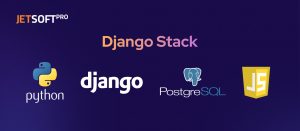
- Django Stack – Python, Django, PostgreSQL, JavaScript
The Django stack is a popular Python-based technology stack used for building web applications. Django is a web framework used for creating APIs and handling HTTP requests. PostgreSQL is a powerful open-source relational database used for storing data, and JavaScript is used for the front-end development.
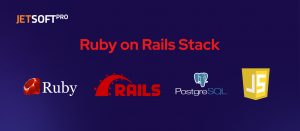
- Ruby on Rails Stack – Ruby, Rails, PostgreSQL, JavaScript
The Ruby on Rails stack is a technology stack based on the Ruby programming language. Ruby on Rails is a web framework used for building full-stack web applications. PostgreSQL is used for storing data, and JavaScript is used for the front-end development.
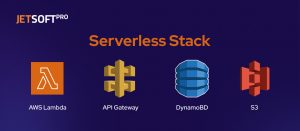
- Serverless Stack – AWS Lambda, API Gateway, DynamoDB, S3
The serverless stack is a modern technology stack used for building scalable and cost-effective web applications. AWS Lambda is a serverless compute service used for running code without provisioning or managing servers. API Gateway is used for creating APIs, DynamoDB is used for storing data, and S3 is used for storing files and static assets.
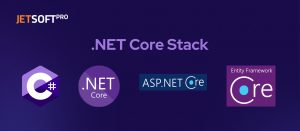
- .NET Core Stack – C#, .NET Core, ASP.NET Core, Entity Framework Core
The .NET Core stack is a technology stack based on the .NET Core framework. C# is the programming language used for the server-side scripting. ASP.NET Core is a web framework used for creating APIs and handling HTTP requests. Entity Framework Core is an ORM (Object-Relational Mapping) used for interacting with databases.
Steps to take when choosing a technology stack
When it comes to developing software, choosing the right technology stack is crucial. A technology stack refers to the set of programming languages, frameworks, libraries, and tools used to build a software application. With so many options available, it can be overwhelming to choose the right one for your project. In this article, we will discuss the steps to take when choosing a technology stack.
Step 1: Research and gather information about the different options available
The first step in choosing a technology stack is to research and gather information about the different options available. This includes programming languages, frameworks, libraries, and tools. You can use online resources such as blogs, forums, and websites to gather information about the latest technology trends and best practices.
Step 2: Analyze the needs and requirements of the software being developed
The next step is to analyze the needs and requirements of the software being developed. This includes understanding the business requirements, user needs, and technical requirements. This analysis will help you determine the type of technology stack that best fits your project.
Step 3: Evaluate the skills and experience of the development team
It is important to evaluate the skills and experience of the development team before choosing a technology stack. This will help you determine if the team has the necessary expertise to work with a particular technology stack. You should also consider the level of training and support needed to ensure the team can work efficiently with the chosen technology stack.
Step 4: Consider factors such as scalability, cost, and performance
When choosing a technology stack, it is important to consider factors such as scalability, cost, and performance. Scalability refers to the ability of the software to handle increasing amounts of data and users. Cost refers to the expenses associated with the technology stack, including licensing fees and hardware costs. Performance refers to the speed and efficiency of the software application.
Step 5: Create a shortlist of potential technology stacks
Based on the research and analysis, create a shortlist of potential technology stacks that meet the needs and requirements of the software being developed. This shortlist should include options that are scalable, cost-effective, and can deliver the desired performance.
Step 6: Conduct a proof of concept to test the shortlisted options
The final step is to conduct a proof of concept to test the shortlisted options. This involves developing a small prototype or sample application using the technology stack. This will help you determine if the technology stack is a good fit for the project, and if the development team can work efficiently with it.
Conclusion
In conclusion, selecting the right technology stack is a crucial step in software development. A technology stack consists of various layers, including the front end, back end, database, and infrastructure layers. Each layer has specific requirements and constraints that must be carefully evaluated to select the appropriate tools and technologies. Several factors need to be considered when selecting a technology stack, including the type of software being developed, the skills and experience of the development team, scalability and future growth, cost and budget constraints, and performance and speed requirements. By carefully evaluating these factors and selecting the appropriate technology stack, developers can build applications that meet the needs of their users and stakeholders while ensuring high performance, scalability, and maintainability.

